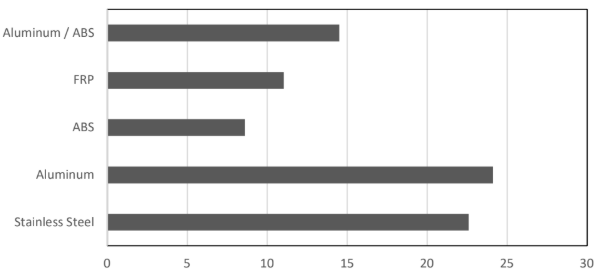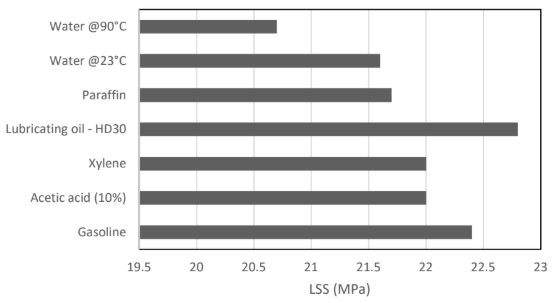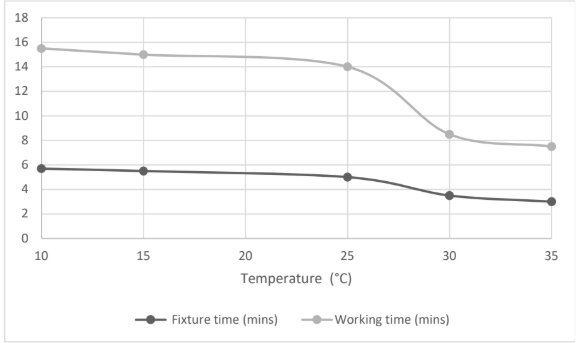Enhanced TDS
Identification & Functionality
- Chemical Family
- RTU Product Type
- Technologies
- Product Families
Features & Benefits
- Ready-to-Use Product Features
- Features and Benefits
- Rapid curing
- High Peel Strength
- Multi purpose
- Excellent bond to a wide range of plastics, composites and metals
- Suitable for service temperature at up to 100°C (212 °F)
Applications & Uses
- Compatible Substrates & Surfaces
- Processing Information
Pretreatment
The strength and durability of a bonded joint are dependent on proper pretreatment of the surfaces to be bonded, however the methacrylate adhesives can be used effectively with little surface preparation. Ideally joint surfaces should be cleaned with a good degreasing agent such as acetone, iso-propanol (for plastics) or other proprietary degreasing agents in order to remove all traces of oil, grease and dirt. Low grade alcohol, gasoline (petrol) or paint thinners should never be used. The strongest and most durable joints are obtained by either mechanically abrading or chemically etching (“pickling”) the degreased surfaces.
Mix ratio Parts by weight Parts by volume Araldite®2021-2 A 100 100 Hardener 2021-2 B 95 100 Application of adhesive
This system is available in cartridges incorporating mixers and can be applied as ready to use adhesive with the aid of the tool recommended by Huntsman Advanced Materials.
The resin/hardener mix may be applied manually or robotically to the pretreated and dry joint surfaces.Huntsman's technical support group can assist the user in the selection of a suitable application method as well as suggest a variety of reputable companies that manufacture and service adhesive dispensing equipment.
A layer of adhesive 0.25 mm thick will normally impart the greatest lap shear strength to the joint. The joint components should be assembled and secured in a fixed position as soon as the adhesive has been applied.Warning: the cure reaction can generate a high amount of heat, it is not recommended to mix large amounts of material at room temperature.
Equipment maintenance
All tools should be cleaned with hot water and soap before adhesives residues have had time to cure. The removal of cured residues is a difficult and time-consuming operation.If solvents such as MEK are used for cleaning, operatives should take the appropriate precautions and, in addition, avoid skin and eye contact.
Technical Details & Test Data
- Typical Cured Information
Shore D hardness (Typical average values) Cure 7 days at RT and test at 23°C
Hardness - 72-78DTensile Properties (Typical average values) Cure 7 days at RT and test at 23°C
Tensile Strength (ASTM D638) - 24 MPa
Tensile Modulus (DIN 53283) - 605 MPa
Elongation at break (DIN 53283) - ca. 25%Cleavage Peel Strength (Typical average values) Cure 7 days at RT
Stainless Steel/Stainless Steel 18 pliAverage lap shear strengths of typical metal-to-metal joints or plastic-to-plastic joints (ASTM D1002) (typical average values)
Cured for 7 days at RT and tested at 23°C. Substrates sandblasted and degreased with acetone.
Lap shear strength versus temperature (ASTM D1002) (typical average values)
Substrates sandblasted and degreased with acetone. Cure: 7 days at RT.Temperature (°C)
Lap Shear Strength (LSS) Unit -40°C 36 MPa -20°C 29 MPa 25°C 23 MPa 85°C 15 MPa 121°C 12 MPa Remark: Cohesive failures in all above result, substrate: Aluminum /Aluminum
Lap shear strength after harsh environment conditions (ASTM D1002) (typical average values)
Cure: 7 days at RT. Test at 23°C.
Initial : 23 MPa
Environmental Cycle (30 days) : 25 MPaRemark: Cohesive failures in all above result, substrate: Stainless steel / Stainless steel
Environmental Cycle = 8 hours @ -30°C, 8 hours @ 85°C, 8 hours @ 30°C @100% RHLap shear strength versus immersion in various media (ASTM D1002) (typical average values)
On aluminium. Cure: 7 days at RT. Tested at 23°C.
LSS was determined after immersion for 30 days at 23°C.
Working time and fixture time at different temperature

Safety & Health
- Handling Precautions
Our products are generally quite harmless to handle provided that certain precautions normally taken when handling chemicals are observed. The uncured materials must not, for instance, be allowed to come into contact with foodstuffs or food utensils, and measures should be taken to prevent the uncured materials from coming in contact with the skin, since people with particularly sensitive skin may be affected. The wearing of impervious rubber or plastic gloves will normally be necessary; likewise the use of eye protection. The skin should be thoroughly cleansed at the end of each working period by washing with soap and warm water. The use of solvents is to be avoided. Disposable paper - not cloth towels - should be used to dry the skin. Adequate ventilation of the working area is recommended.
Packaging & Availability
- Packaging Type
Storage & Handling
- Storage and Handling Information
Araldite® 2021-2 may be stored during 18 months at 2 - 8°C provided the components are stored in the original sealed containers. The expiry date is indicated on the packaging.The product may be placed at room temperature before use, the total time at room temperature should not exceed 6 months. Long term exposure above 25°C will reduce the shelf life of the product.
Our products are generally quite harmless to handle provided that certain precautions normally taken when handling chemicals are observed. The uncured materials must not, for instance, be allowed to come into contact with foodstuffs or food utensils, and measures should be taken to prevent the uncured materials from coming in contact with the skin, since people with particularly sensitive skin may be affected. The wearing of impervious rubber or plastic gloves will normally be necessary; likewise the use of eye protection. The skin should be thoroughly cleansed at the end of each working period by washing with soap and warm water. The use of solvents is to be avoided. Disposable paper - not cloth towels - should be used to dry the skin. Adequate ventilation of the working area is recommended.
Other
- Color
- Light brown
- Application Information
Value Units Test Method / Conditions Mix Ratio 0.95 - Hardener : Resin - Physical Properties
Value Units Test Method / Conditions Density 8.6 lb/gal lb/gal Flash Point 50.0 °F °F Tag Closed cup
